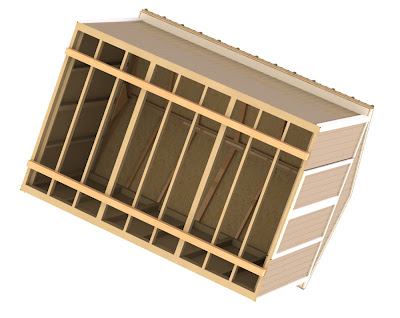I have had a few requests regarding a CNC router setup technique and thought I would detail it here on my blog. This is setup I have used for a wide variety of softer materials and I would not recommend the following setup for any type of metal.
That being said, perhaps I should preface this description with a bit of my background. In the late 90's I was employed at a prototype shop in Northern Wisconsin. Our clients included, Compaq, 3M, U.S. Army, Fiskars, NCR, among many others.
In that particular shop, we used 3 & 4 axis VNC's (vertical machining center), and a 5 axis router table type machine. I used this technique at that shop daily for 3 years to cut hundreds of parts.
Below is an example of the machines we used. Milltronics VNC for 3 and 4 axis work, and a Motion Master 5 axis CNC router table.


And here is a few samples of the work we were doing.

Milling a Compaq laptop base for a presentation prototype out of RenShape modeling board.

Urethane clear casted complete laptop, used for smoke-flow fan performance testing.

Infrared firefighter camera.

Another infrared camera application.

And a few non-functional tape measure prototypes.
Now on to the pin location cut method Procedure.
In order to use the location pin method of cutting, you need to adhere a waste board to the router table. You can use either a sheet of ABS plastic or MDF. Which ever you choose, it just has to be dense and thick enough to support the pins you will be using to locate your part. There are a couple of things to point out about this step of the process.
1. The waste board has to be flat and parallel with the router table.
2. It needs to be secured to the table so it will not move during the process. (we did not use a vacuum table)
3. It needs to be larger than the block your part is being cut from.
You should tape down the waste board and fly-cut both sides to ensure the top surface is parallel with the router table.
There are few benefits to using ABS for your waste board. It is more stable than MDF. You can patch your drill holes by super-glueing ABS rods (the same size as your location pins) then fly-cut it smooth again. It holds your location pins in place much more securely than MDF.
If you are using MDF for a waste board, it is necessary that you spray paint the surface you are applying the tape to, which will ensure a good bond with the tape. This is also highly recommended with any porous and powdery substrate you are trying to tape down.

Above is a diagram of the process of setting up to cut your part block.
The best tape I have found for taping your waste board and part stock to the table is (Nitto) Permacel 2" wide double sided craft tape. It is .007 thick and can be "loosened" after use with some denatured alcohol if you need help in getting your stock loose. you can find the tape here if you need to order some: http://www.findtape.com
So if you look at the diagram above for reference, I will try and walk through the steps for cutting a one-flip part. (click on the image to enlarge it)
1. Attach and fly-cut the waste board to table with the Permacel tape.
2. Cut stock to a size that allows a bit of extra room for location pins on each end.
3. Locate part stock on table and make it's thickness parallel, using the same fly-cut method you did for the waste board.
(Remember to spray the substrate with gloss spray paint and let it dry completely before trying to apply tape to it. This is absolutely necessary with a substrate like urethane foam modeling boards.)
4. When setting up you tooling path , your first tool should be a drill (tool path) that drills down through the part block and into the waste board but not into the router table!
5. Install location pins in the location pin holes (threaded pull-out dowel pins are available at mcmaster.com) slide permacel taped substrate in place over location pins.
6. Run all tool paths on first side. It might be necessary to set your depth of cut on the first side so there is a web of material to help support the part when flipped over to cut the second side.
7. Pull the pins out of the block and carefully pry your part off the table. (mcmaster also sells pin pulling devices like in the pictures below, to aid in pin removal.) Once again, you can wick some denatured alcohol under the part, to help loosen up the tape. Just make sure it is wiped completely dry before you stick the second side down.
8. Flip the part over in the same orientation (axis) that you used when setting up the tool paths.
9. Apply Pemacel tape to second side and slide part block over location pins.
10. Run all the second side tool paths. (here again it may be necessary to leave a bit of webbing around the base of the cut to secure your part in the block. A final outline cut of the part will free it from the block.
11. Pull pins and pry left-over stock off the waste board.




So there you go...quite simple really. You are probably asking, what could I possibly ever cut out with this method. What if you wanted to add a 3 dimensional spoon to a restaurant sign? Set up the file, then use the steps above to cut most any non-symmetrical part you need to cut.
If you have any questions just post them in the comments section below, and I'll try and help you out.....thanks























































